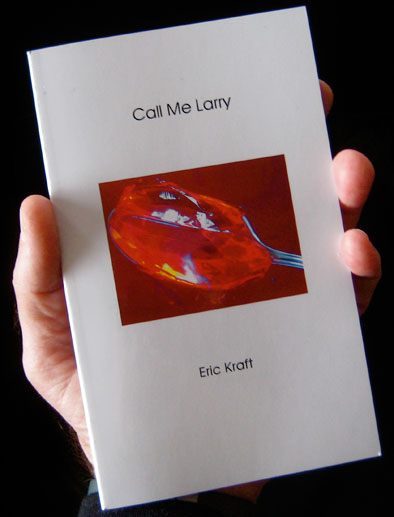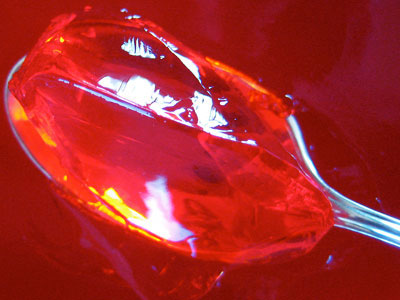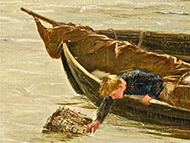CALL ME LARRY is included in LITTLE FOLLIES. However, it is also available on its own as a pocket-size paperback. |
||
| The Babbington Press (2009) 78 pages 4.25 inches by 6.88 inches $ 10.95 |
||
| DIGITAL EDITIONS | Kindle $1.99 iBooks $1.99 Nook $1.99 |
|
Call Me Larry
(a sample)
Chapter 1
I WAS BARELY ADOLESCENT when I first encountered Larry Peters, the eponymous hero of a series of books called, collectively, The Adventures of Larry Peters. My maternal grandmother, Gumma, gave me the first book in the series, The Shapely Brunette, as a present and a consolation, when I was sick, confined to bed, on my birthday. I had one of the childhood diseases, but I can’t recall now which one it was: measles, mumps, chicken pox, or the twenty-four-hour virus. These illnesses were not so bad, I thought. The discomfort that they brought was part of growing up, each made one a little more grown up, and the knowledge that one gained from them ranked in the upper third or so of things that were, at that age and time, important to know: if one did not know at first hand what the pain of mumps was like, one was not an initiate into a certain shadowy nook of childhood experience that those outside it wanted to enter. That it might be nice not to have to be initiated into that particular corner of childhood experience at all did not occur to me then. It would have been more painful, at the time, to be excluded from it, and so I welcomed the mumps, the experience of mumps, the knowledge of mumps.
There was even an aspect of illness that I enjoyed. I liked having to stay in bed for hours on end, left to myself, left to amuse myself. At that time, before my mother became an independent businesswoman, she was at home for most of the day, cleaning the house and cooking. She would come into my room from time to time to see if I needed anything, but for most of the day she was busy with her own occupations, and so I had time to myself, time to think, time to let my mind wander, time just to enjoy being alone; and when my mother left the house, as she did for at least part of each day, to go shopping or do other chores or to visit a friend, I had the house to myself. I had formed the habit, at an early age, of reading in bed, so it was a treat to have all day to do it, in my own bed, in my own room, and, best of all, in a silent and empty house. In the morning, my mother would give me breakfast in bed: toast and cocoa, hot cereal with evaporated milk, or graham crackers broken into milk. I would listen to the radio while I ate, usually to a program called “Bob Balducci’s Breakfast Bunch,” which was supposed to originate from a restaurant, Bob Balducci’s, famous for its pancakes and waffles. The program was a variety show, with singers and comedians, and with guests who spoke on subjects that they knew at least something about. All of that was interesting enough, but my favorite part came late in the program, when Bob Balducci and his sidekick, Baldy the Talking Dummy, had the people in the audience—a group that seemed, from his interviews with representatives of it, to consist entirely of grandmothers—stand beside their chairs and perform calisthenics. My mental image of this performance was so vivid and so hilarious that on some mornings it made me laugh until I cried. I was careful to set my tray on my bedside table as soon as Baldy the Dummy announced in his everlastingly ebullient style, “Now it’s time to get up off your (pause) chairs!” I knew that if I didn’t set my tray aside, I was sure to spill my breakfast when I began laughing. When Bob Balducci signed off, I would sit up, with several pillows propped behind me, and read.
At noon, I’d have clam chowder, tomato soup, or chicken noodle soup with saltine crackers that I would either break into pieces and scatter over the top of the soup or eat in single bites that I alternated with spoonfuls of soup, and I would listen to the radio while I ate, listening at this time of the day to soap operas, my favorite of which was “Mary Backstayge, Noble Wife.” After lunch, I would read some more, play with my plaster Babbingtonians, listen to the radio, and doze.
I should explain about those plaster Babbingtonians. At Jack’s Twenty-Four Hour Jokes, on the southwest corner of Bolotomy and Main, one could buy, and most of us between the ages of nine and twelve did buy, model kits called Virtues ’n’ Vices, which contained red rubber molds and plaster of Paris, with which one could cast figures that represented the Cardinal Virtues and the Seven Deadly Sins. I had quite a collection of these figures, most of them imperfect, with holes where bubbles had formed when I filled the mold, or with an arm glued ineptly back on after I had broken it in the unmolding. From the first, I had noticed resemblances between the figures and various people around town. In fact, I found that by making a few simple modifications, working with one of my mother’s emery boards, a Popsicle stick, and some fresh plaster, I could construct, out of Wisdom, Courage, Temperance, Justice, Faith, Hope, Charity, Pride, Covetousness, Lust, Anger, Gluttony, Envy, and Sloth, convincing likenesses of nearly everyone I knew or noticed. A little work with some tempera paint made the likenesses even more convincing. I enjoyed manipulating these model Babbingtonians, pairing them, grouping them, imagining conversations and arguments among them. (Years later, I learned that Jack sold other molds as well, but only to older boys and girls, molds from which one could cast figures of men and women that could be combined in interesting sexual positions. When I learned this, two thoughts came immediately to my mind: first, that it must have taken much greater skill than I possessed to unmold these figures and, second, that modifying them to make them resemble Babbingtonians must have been more complicated than modifying the Virtues ’n’ Vices had been.)
At night, during times when I was ill, I would put on my plaid flannel bathrobe and join my mother and father for dinner, and then I would return to bed to read some more, draw pictures, write notes to friends I wasn’t able to visit or see in school, put my plaster Babbingtonians away, listen to the radio some more—most often to mystery programs—and doze. There are certainly worse ways to spend one’s days.

|
|
|
|
|
|
|
|
|
|


